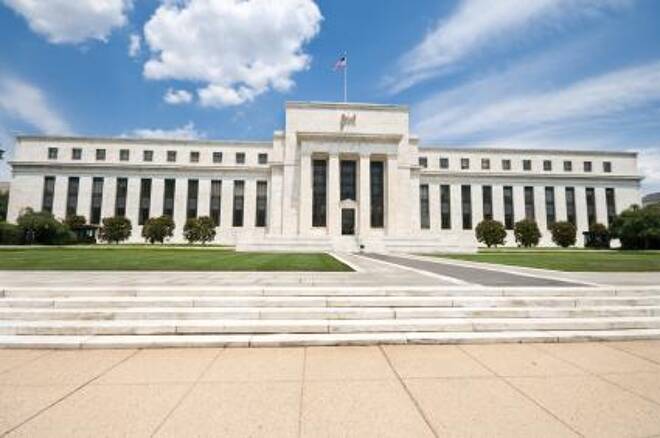Advertisement
Advertisement
Where Are We Headed: The 2006 Rate Hike Versus the Current Rate Hike
By:
On Wednesday, the U.S. Federal Reserve raised its benchmark interest rate for the first time since June 29, 2006. It was the first change in the key rate
On Wednesday, the U.S. Federal Reserve raised its benchmark interest rate for the first time since June 29, 2006. It was the first change in the key rate since December 16, 2008 when the Fed cut the Federal Funds rate 1.00 % – 0.75% to 0.00% to 0.25%. In its monetary policy statement, the Fed cited numerous reasons for its U.S. rate decision.
The rate hike in 2006 marked the 17th straight time the central bank had raised rates. The move was designed to keep a lid on inflation. At the time, stock prices surged, posting their biggest one-day gain in more than a year on a statement from the Fed that suggested that this might be the end of the rate hike cycle.
In hiking the rate to 5.25 percent, its highest level in more than five years, the Fed cited rising energy costs and a growing economy “have the potential to sustain inflation pressures.”
When the Fed began that current money-tightening campaign under former Chairman Alan Greenspan in 2004, the Feds Fund benchmark stood at a 46-year low of 1 percent, and the initial quarter-point rate hikes had little perceptible effect. Credit remained easy, and mortgage rates actually drifted lower for months.
At the same time consumer prices, fueled by surging gas costs, were rising at a 4 percent annual rate and appeared to be accelerating. Even excluding the volatile food and energy categories, prices were rising at a 2.4 percent annual rate, well above the Fed’s upper target of 2 percent. Other commodities were also soaring near all-time highs, especially gold and food commodities, driven mainly by the falling U.S. Dollar.
Economic conditions have changed considerably since the last rate hike. This time around, the Federal Open Market Committee hiked rates because it believes that economic activity has been expanding at a moderate pace. It said that household spending and business fixed investment have been increasing at solid rates in recent months, and the housing sector has improved further, however, net exports have been soft.
The FOMC also said that a range of recent labor market indicators continued to show further improvement and confirmed that underutilization of labor resources had diminished appreciably since early this year. It also said that inflation was running below the committee’s 2 percent mandate, but blamed that on declining energy prices.
The key difference in the 2006 rate hike and the December 16 move is the way the Fed views the economy. In 2006, the economy was moving at a more robust pace. This time, the Fed says that economic growth is expanding at a “moderate pace”.
Energy prices are also nearing multi-year lows. Gold and food commodities are also nearing levels not seen in 2006. The stronger U.S. Dollar is the main reason for the decline in commodity prices.
The U.S. Dollar is not only strengthening because of higher U.S. interest rates. It is also garnering support because the economies in Japan, Euro Zone and U.K. are still weak and their central banks are considering cutting rates further or implementing fresh stimulus measures.
In making the Fed announcement, Chairwoman Janet Yellen said the time is right for the U.S. to raise rates, but it will continue to monitor the impact of a rate hike on the economy. This is why traders believe the Fed will wait until at least June 2016 before making another rate hike decision.
In the meantime, the currency markets are expected to see more volatility because of the interest rate differential between U.S. rates and the rates in Japan, the U.K. and the Euro Zone.
This time around, the U.S. Dollar will benefit more from the Fed rate hike because the rest of the world’s major economies are still struggling. So the biggest impact this rate hike will have will be on the U.S. Dollar. A stronger U.S. Dollar typically leads to lower commodity prices so gold is expected to be one of the biggest losers during this money-tightening campaign.
About the Author
James Hyerczykauthor
James Hyerczyk is a U.S. based seasoned technical analyst and educator with over 40 years of experience in market analysis and trading, specializing in chart patterns and price movement. He is the author of two books on technical analysis and has a background in both futures and stock markets.
Advertisement
